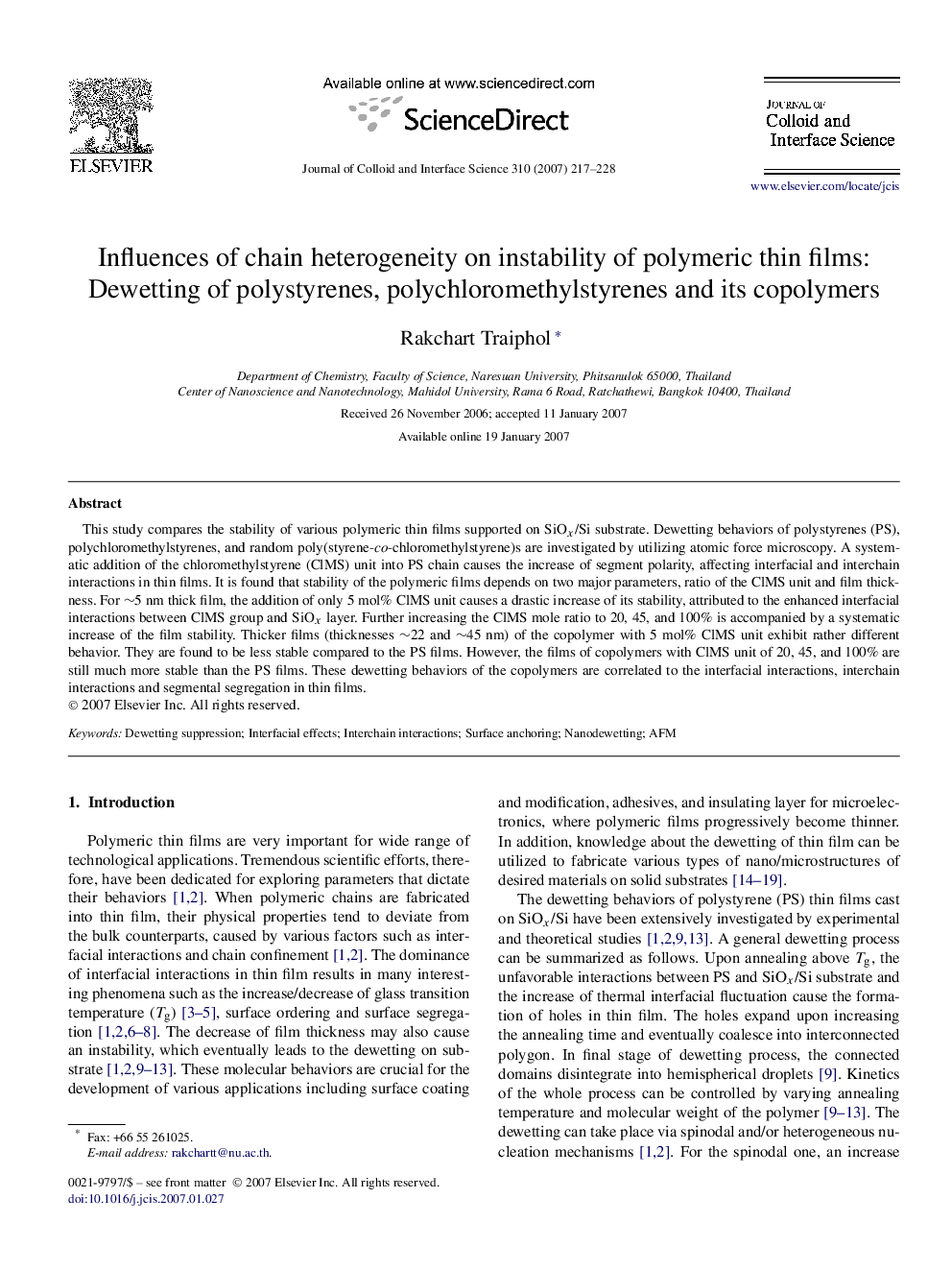| Article ID | Journal | Published Year | Pages | File Type |
|---|---|---|---|---|
| 612332 | Journal of Colloid and Interface Science | 2007 | 12 Pages |
This study compares the stability of various polymeric thin films supported on SiOx/Si substrate. Dewetting behaviors of polystyrenes (PS), polychloromethylstyrenes, and random poly(styrene-co-chloromethylstyrene)s are investigated by utilizing atomic force microscopy. A systematic addition of the chloromethylstyrene (ClMS) unit into PS chain causes the increase of segment polarity, affecting interfacial and interchain interactions in thin films. It is found that stability of the polymeric films depends on two major parameters, ratio of the ClMS unit and film thickness. For ∼5 nm thick film, the addition of only 5 mol% ClMS unit causes a drastic increase of its stability, attributed to the enhanced interfacial interactions between ClMS group and SiOx layer. Further increasing the ClMS mole ratio to 20, 45, and 100% is accompanied by a systematic increase of the film stability. Thicker films (thicknesses ∼22 and ∼45 nm) of the copolymer with 5 mol% ClMS unit exhibit rather different behavior. They are found to be less stable compared to the PS films. However, the films of copolymers with ClMS unit of 20, 45, and 100% are still much more stable than the PS films. These dewetting behaviors of the copolymers are correlated to the interfacial interactions, interchain interactions and segmental segregation in thin films.
Graphical abstractThe presence of chloromethyl group in polystyrene enhances interfacial interactions with SiOx/Si substrate. Upon annealing, the polystyrene film (left) dewets the surface while film of the copolymer (right) is stable.Figure optionsDownload full-size imageDownload as PowerPoint slide
